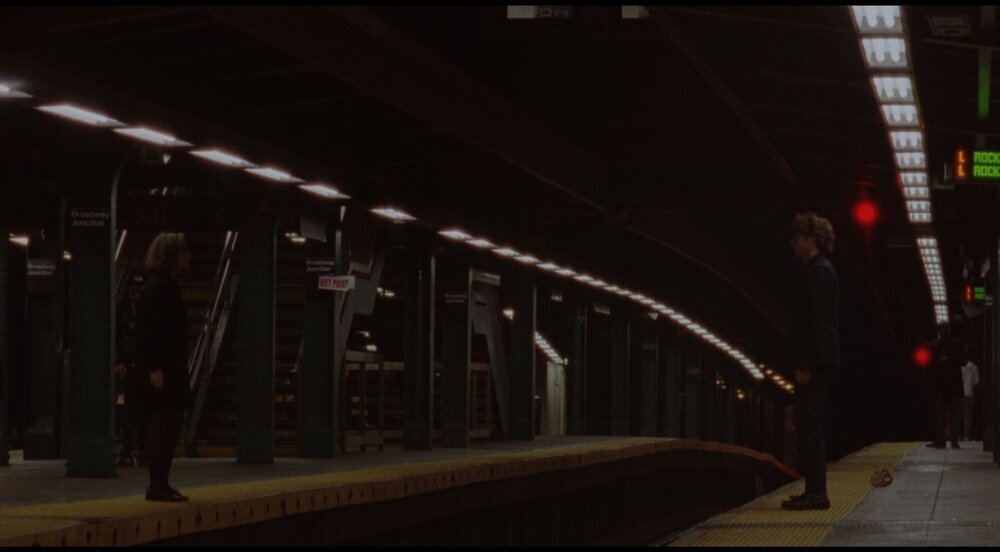Jordan Abrams
À l'infini, Jordan Abrams (2016)
Jordan Abrams is an American screenwriter, actor, producer, and film director. His directorial debut, Nostalgia, was selected as a finalist at the first annual Moët and Chandon's Moet Moment Film Festival. In 2014 Abrams starred opposite his brother Gore in Summum Bonum, which premiered at London East End Film Festival and Los Cabos. À l'infini premiered at Auckland Underground Film Festival, Los Angeles CineFest, BLOW-UP International Art House Film Festival Chicago, and Gulf of Naples Independent Film Festival.
Jordan Abrams participated in an exclusive interview with Filmatique as part of Talents 2020.
//
FILMATIQUE: À l'infini traces one afternoon in New York City, as a couple embarks on a path to infinity—a plan to carry out a suicide pact. While Sean seems very sure of the plan, Jacqueline falters; their dynamic shifts, however, once they arrive at the subway platform. What was your inspiration for this film; how did the idea first form in your mind?
JORDAN ABRAMS: First, I'm very inspired by trains and by riding trains and how the screeches of the tracks can start to sound like music. The idea for À l'infini (Infinity) first came to me as a single image when I was pacing on the street. I was thinking about the power of touch and was imagining two people looking at each other from across subway train tracks, heading in opposite directions. It sort of made me tear up. I was listening to Jean Michele Jarre's Equinoxe vinyl on repeat living in a tiny little cabin with no running water at the top of Laurel Canyon (it was just about falling off the cliff but had this charm from the ghosts of Nestor Almendros and Francois Truffaut, who used to stay in the cabin when they'd work in LA). I had this ominous track playing in my gritty, candlelit bunker that is all about one long day—the longest of the year.
I think living on the edge like that and listening to that album inspired the severity and tone of the film. I was inspired by the cover of that album too. It's an animated audience all holding up binoculars watching a stage. I wanted Infinity to feel like these two characters were in their own play and that thousands of eyes were on them. I wanted the film to have a naughty, voyeuristic and raw lens perspective of the characters—something that felt like an uncensored video you'd see of something traumatic on social media. The opening scene came to me last. It was originally going to be a dinner. The night before, maybe eight hours before call time, I realized we needed to see the characters in a more intimate and vulnerable way, which required some immediate phone calls. They were both so trusting and really the best to work with.
FLMTQ: You shot À l'infini on 16mm in New York City, imbuing the film a distinctive, gritty aesthetic which is heightened by the screeching of subway cars along the rails. Can you touch upon your collaborations with Ed Herrera, your director of photography, on the decision to shoot a guerilla-style film on celluloid? What obstacles did you face on set, and how did you overcome them?
JA: That style was really the only way I was interested in shooting this film. I needed it to seem real and of the moment and all about the couple. And in truth, it's the only way we could have pulled off something so seemingly severe in a matter of hours on a dime. There were police all over that station. I had such a great time with Ed Herrera. Rhythmically and cinematically we were on the same page from our first call. I met him over the phone. Our mutual buddy, Kali Riley, introduced us and we spoke for a couple of weeks sharing music and imagery until we met in New York. We shot two films in two days so on the first shoot, we came to trust each other on a new level. When you're running around the subway with a bunch of people carrying expensive borrowed equipment and you have Simon Maignan (AC) lugging a hundred-pound backpack on his shoulders while loading new film, you develop a special connection when things go right.
With Infinity, I wanted to shoot elevated trains that overlooked the cemetery over Broadway Junction. We faced several obstacles. Firstly, our technical obstacles were that we had only about 600 feet of film or so (mainly shorties or just portions of already exposed rolls), which is about 17 minutes of film stock and we were running out of daylight. It was a rainy day—busy, slippery, and moody. I was terrified we were going to get shut down. I was feeling sort of crazy at the time anyways and air that day was heavy. Broadway-Junction is a three-level train station and we were about to go make a big commotion. Ed knew to keep close to subjects at all times. It was all about their mutual language and connection and facing their moment of truth as the roar of the train harassed them. It was really a wonderful experience for me personally just to watch the natural choreography of the scene unfold. By the time we got to the platform to shoot the climax, it was dark. I think we did one take and then the lights turned on and it was like heaven. We were saved. Timing those trains isn't easy either. We were smart enough to choose a station that showed when the trains were coming so that we could run back and forth between the actors' perspectives. So it was a lot of luck, but it also felt like we were all very much in sync with the trains.
À l'infini, Jordan Abrams (2016)


